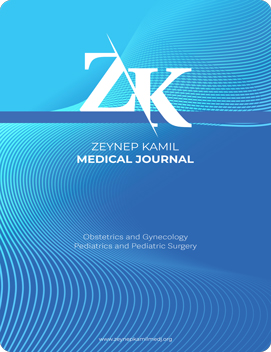Quick Search
The effects of vaginitis on genital hygiene: A comparative descriptive cross-sectional study
Beyzanur Işbay Aydemir1, Nur Bahar Kuru Aktürk2, Suzan Düzkar Gözlü3, Melike Dişsiz41Department of Nursing, Istanbul Aydin University, Faculty of Health Sciences, Istanbul, Turkey2Department of Nursing, Istanbul Arel University, Faculty of Health Sciences, Istanbul, Turkey
3Department of Obstetrics and Gynecology, Girne Dr. Akcicek Hospital, Girne, Cyprus
4Department of Nursing, Health Sciences University, Hamidiye Faculty of Nursing, Istanbul, Turkey
INTRODUCTION: This study aimed to determine the genital hygiene behaviors of women with and without vaginitis, as well as the factors influencing these behaviors.
METHODS: This comparative descriptive cross-sectional study was conducted between October 2023 and February 2024 with a total of 188 women94 diagnosed with vaginitis and 94 without a diagnosis of vaginitiswho attended the Gynecology Outpatient Clinic. Data were collected through face-to-face interviews using the Descriptive Information Form and the Genital Hygiene Behavior Scale. Ethics committee approval, institutional authorization, and written consent from all participants were obtained.
RESULTS: The numbers of pregnancies, deliveries, miscarriages, and curettages were higher in women with vaginitis compared to those without vaginitis (p<0.05). Women without vaginitis had significantly greater knowledge about genital tract infections (p<0.05). Women with vaginitis scored significantly lower on the menstrual hygiene subscale of the Genital Hygiene Behavior Scale compared to those without vaginitis (p<0.05). In the multivariate analysis, age, duration of menstruation, and frequency of sexual intercourse were identified as determinant factors for genital hygiene behaviors in women with vaginitis.
DISCUSSION AND CONCLUSION: This study shows that women, both with and without vaginitis, exhibit high genital hygiene behaviors. However, significant differences were observed between the two groups, with women without vaginitis demonstrating better hygiene practices.
Keywords: Genital hygiene, vaginitis, women.
Manuscript Language: English
















